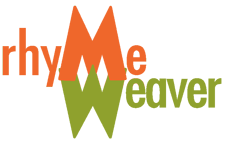
[phl style=”2″]This site explains some fairly complicated stuff in a really simple way[/phl]
[one_third title=””]METER
Meter isn’t complicated, but there is a pervasive myth in the writing world that Meter is something you either “get” or “don’t get.” This is a not true. Meter can be learned. And even people who are intuitively good with meter don’t always know why. It’s best to know. Hover over the METER tab on the navigation bar to see all the topics on METER.[/one_third]
[one_third title=””]RHYME
While anyone who passed kindergarten knows what a rhyme is, there are things about using rhyme in picture books or poetry that you may not know. If you want to write well, its best to know them. Hover over the RHYME tab on the navigation bar to see all the topics on RHYME[/one_third]
[one_third_last title=””]CHILDREN’S STORIES
Anyone can write a children’s story. This is actually a true statement. However, just because anyone can write a children’s story doesn’t mean that the story is publishable. There are things you should be aware of if you want to write and publish a children’s story. Hover over the STORY tab on the navigation bar at the top of the site for a list of relevant topics.[/one_third_last]

 Each of the above categories is broken down into simple mini-lessons that explain one basic concept. The concepts build, so if you choose one that looks good but some things don’t make sense, go to a lesson with a lower number and read up. I start with the basics, so if you choose a lesson that describes concepts you already know, then feel free to skip ahead.
Each of the above categories is broken down into simple mini-lessons that explain one basic concept. The concepts build, so if you choose one that looks good but some things don’t make sense, go to a lesson with a lower number and read up. I start with the basics, so if you choose a lesson that describes concepts you already know, then feel free to skip ahead.
There’s no point in dying of boredom.
Starting in April of 2013, I’ll review one excellent picture book each month. The review will analyze the meter, rhyme and story elements of that book. So if the main chapters don’t have enough examples of the things you’re looking for, just click the PBOTM feature on the navigation bar. You can browse each PBOTM feature for more of the specific elements you’re interested in. You can also sign up for this feature so that it comes to your inbox once a month.
[phl style=”2″]Some random and relevant stuff about me.[/phl]


My first picture book, Watch Your Tongue, Cecily Beasley, came out in September 2012. My second, MONSTER TROUBLE, will be out in late 2015. When I initially decided to write a rhyming picture book, I wasn’t sure how to go about it, or what the rules were. I joined a critique group and SCBWI (The Society for Children’s Book Writers and Illustrators), took some poetry classes, went to workshops, and even got a degree in English along the way. A lot of people tried to discourage me from writing in rhyme. If you’re considering writing a rhyming picture book, some people will tell you that editors don’t like them, and that they are difficult or impossible to sell, and that agents won’t represent picture
book authors. But mostly, people will tell you that you have to write “perfect” rhyme and meter to publish. I wasn’t sure what “perfect” rhyme and meter were when I first heard this. And there seemed to be a lot of conflicting opinions bouncing around about the elusive “perfect” rhyme and meter. It took a long time for me to realize that writing a picture book with rhyme and meter wasn’t impossible; there just wasn’t a really good resource that laid out all the details I needed to know in a way that was easy to understand.
[phl style=”2″]This site has everything you need to know to write with rhyme and meter.[/phl]
 While there are some excellent blogs and books about using rhyme and meter, this site breaks down rhyme and meter in a way that is image-based with very minimal text. This makes both concepts easy to understand in a short period of time. I know which rules you can break and which ones you shouldn’t. But more importantly, I can tell you the rules, not the myths that get passed around the water coolers.
While there are some excellent blogs and books about using rhyme and meter, this site breaks down rhyme and meter in a way that is image-based with very minimal text. This makes both concepts easy to understand in a short period of time. I know which rules you can break and which ones you shouldn’t. But more importantly, I can tell you the rules, not the myths that get passed around the water coolers.
RhymeWeaver is a pretty big site, but you don’t need to ingest it all in one sitting. Take a lesson or two at a time. Mull it over. Then come back. This site is not a blog, so the information will be in exactly the same place every time you visit. Below are links to articles about RhymeWeaver.
And thanks to Jo Deardon, Melanie Ellsworth, Penny Klostermann, William Peery, Leslie Gorin and Dawn Young who have pointed out mistakes or made suggestions so far. Also, I might have missed someone who helped with typos, please remind me if I’ve missed you.
And Good Luck!
